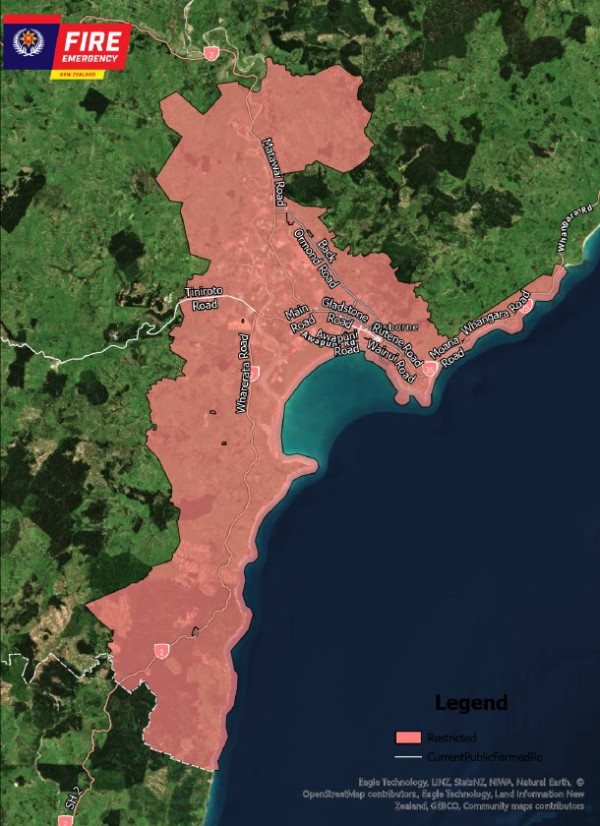Tairāwhiti's Kōpūtūtea zone enters restricted fire season
12 November 2024
The Kōpūtūtea zone of Fire and Emergency New Zealand’s Tairāwhiti District will enter a restricted fire season from 8am on 13 November, until further notice.
This zone covers Gisborne City and the Poverty Bay Basin, including Manutūkē, Pātūtahi and Ngatapa. You can see this zone in the below map.

A restricted fire season means anyone planning on lighting an open-air fire will need to apply for and obtain a permit. You can apply for one at www.checkitsalright.nz.
If anyone is unclear about if they are inside the restricted zone, they can enter their address at www.checkitsalright.nz to find out what fire season they are in.
Tairāwhiti District Commander Peter Clark says the change in season for this area is due to the area drying out and the fire danger increasing.
"The fire danger is currently high due to the dry, windy and warm temperatures," Peter Clark says.
"These conditions are expected to continue for the remainder of the month and, with the increasing number of vegetation fires we are seeing in the area, it is time to make this change."
Hāngī and cultural cooking fires are allowed in a restricted season, but the public are asked to keep them as small as possible, with a 2m x 2m maximum, and to keep a hose close by.
Regardless of the fire season, Peter Clark says people should also be careful when undertaking heat or spark-generating activities, and to keep checking on their previous burns to make sure no re-ignition is possible.













